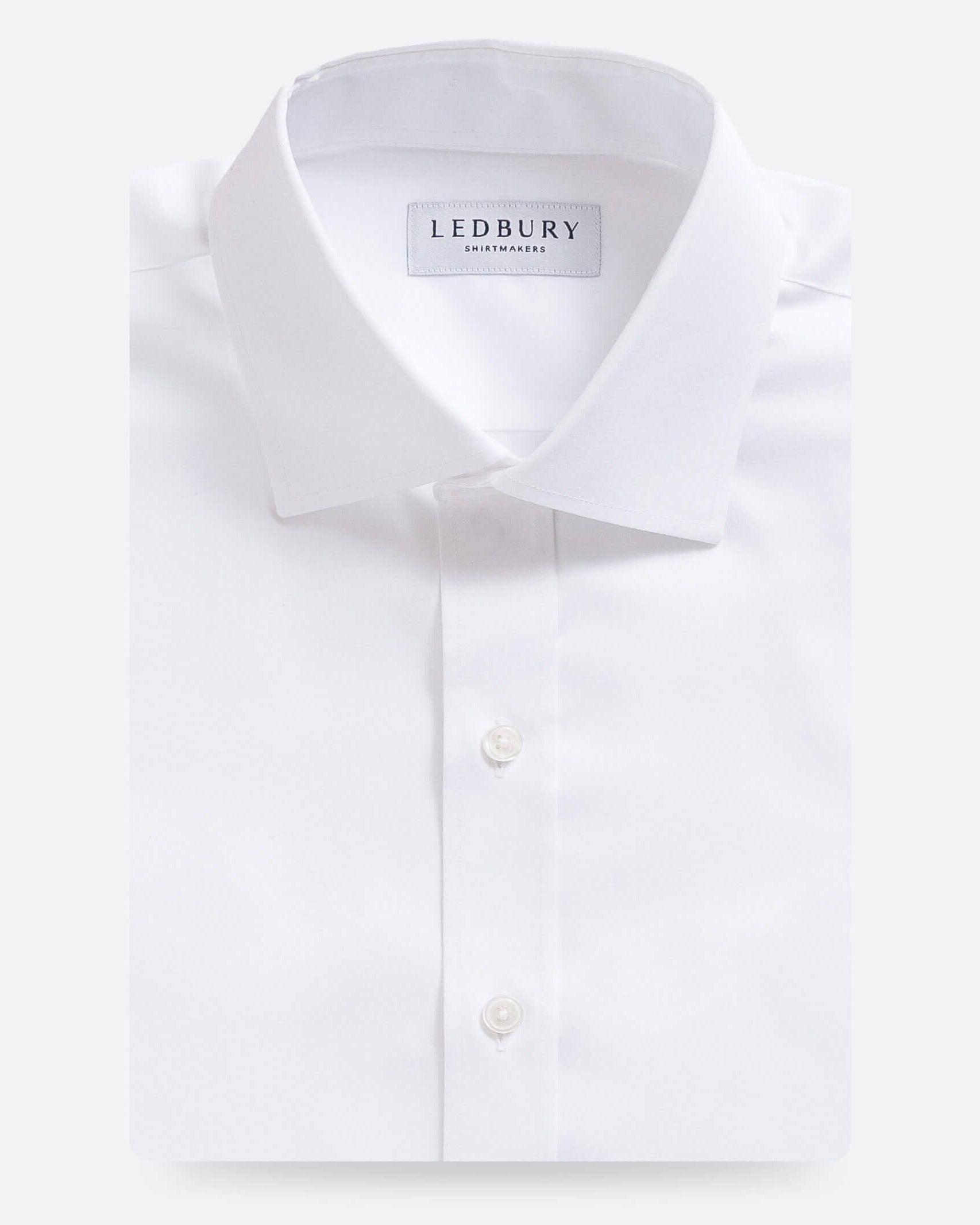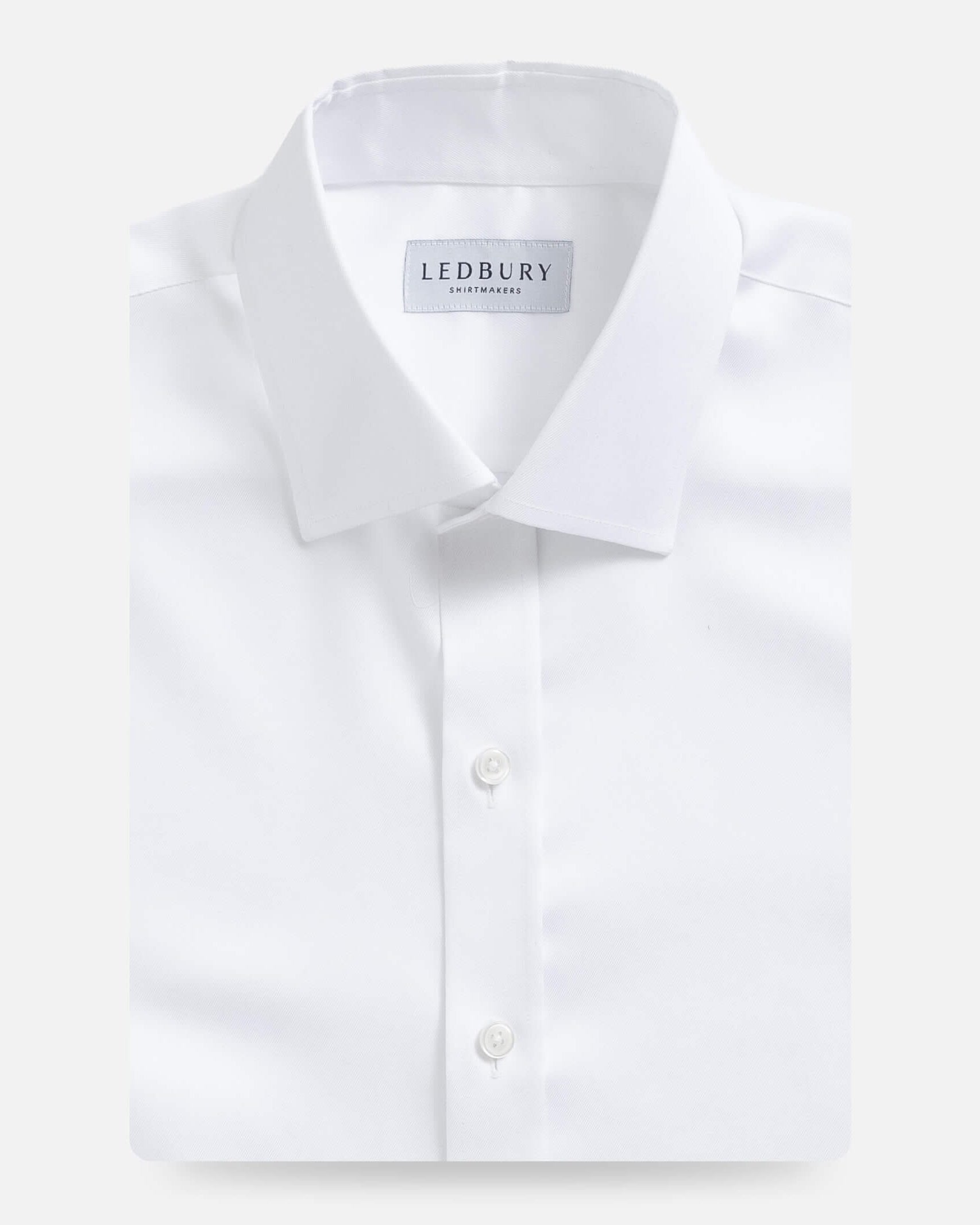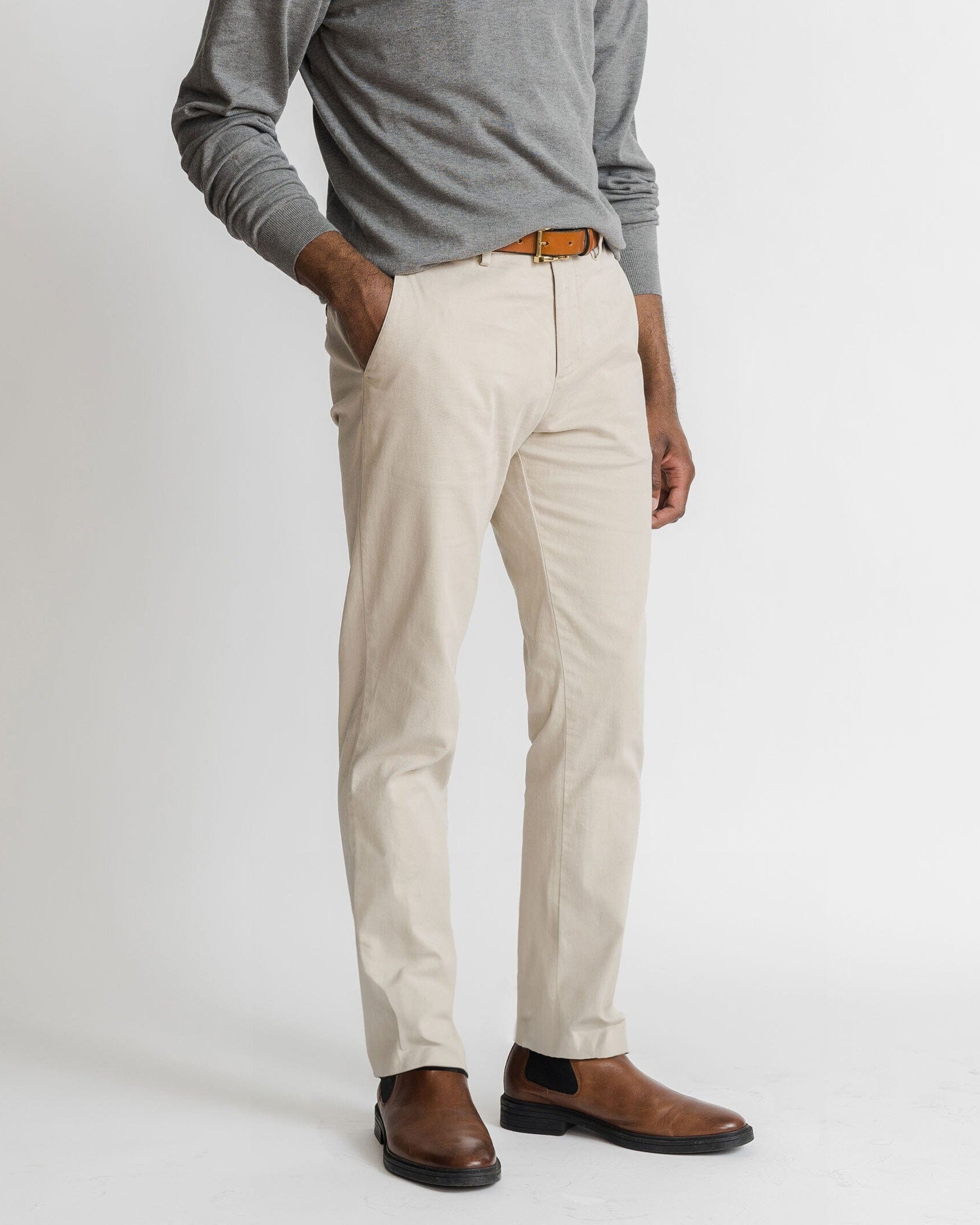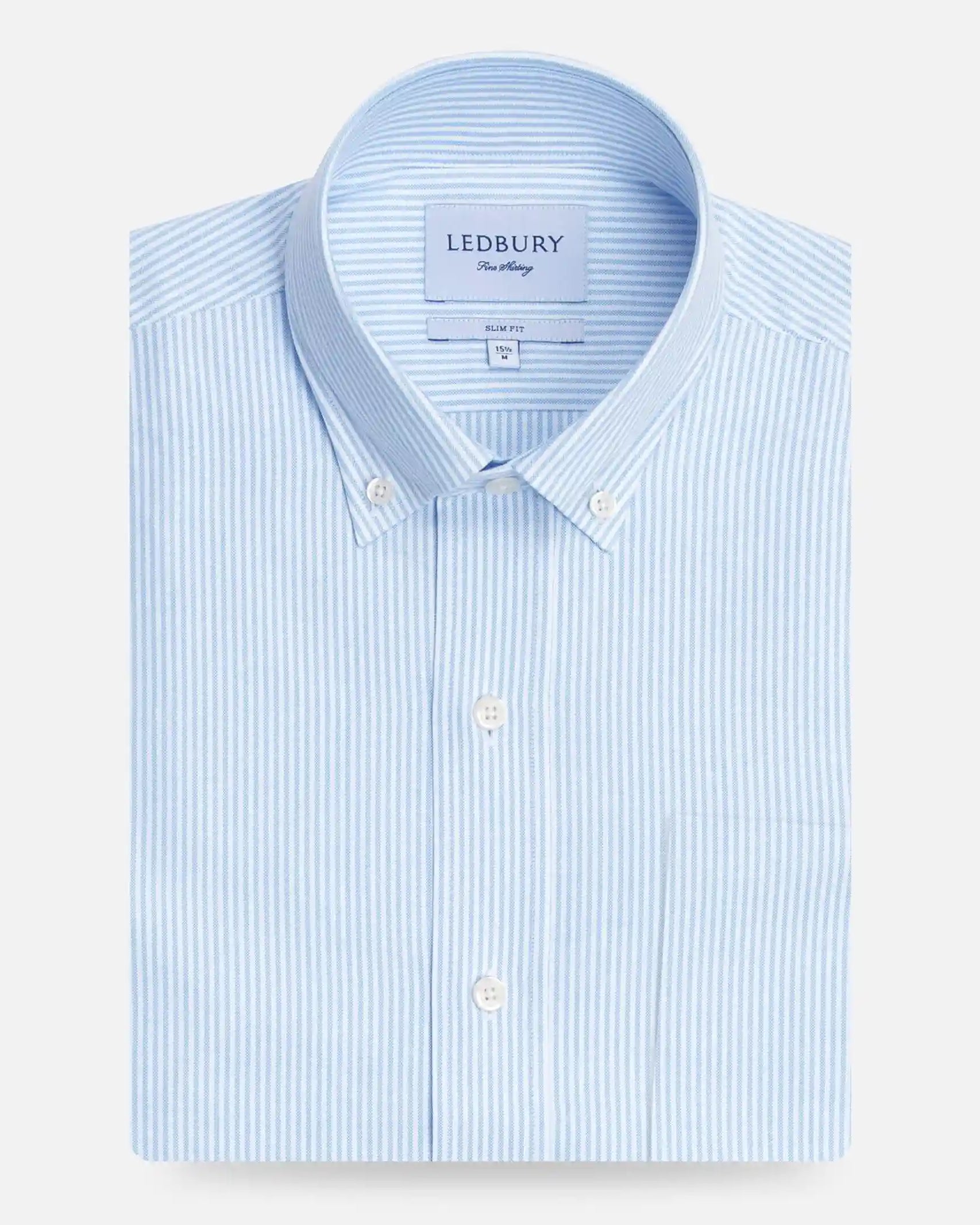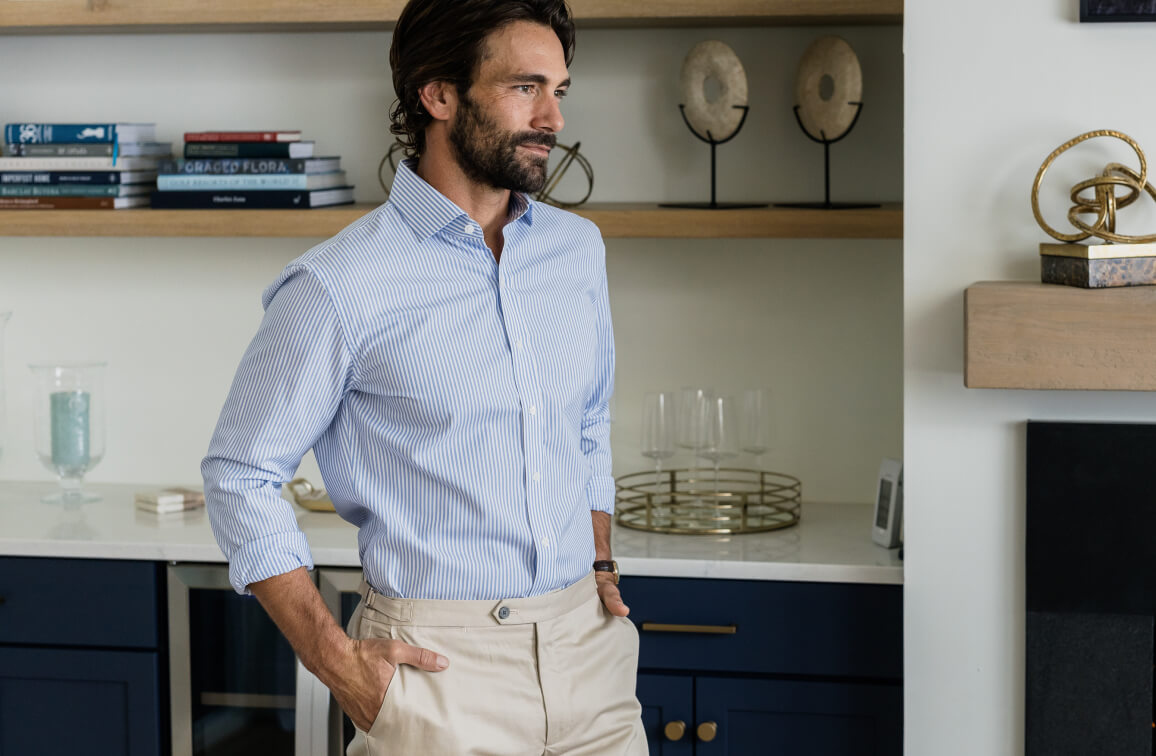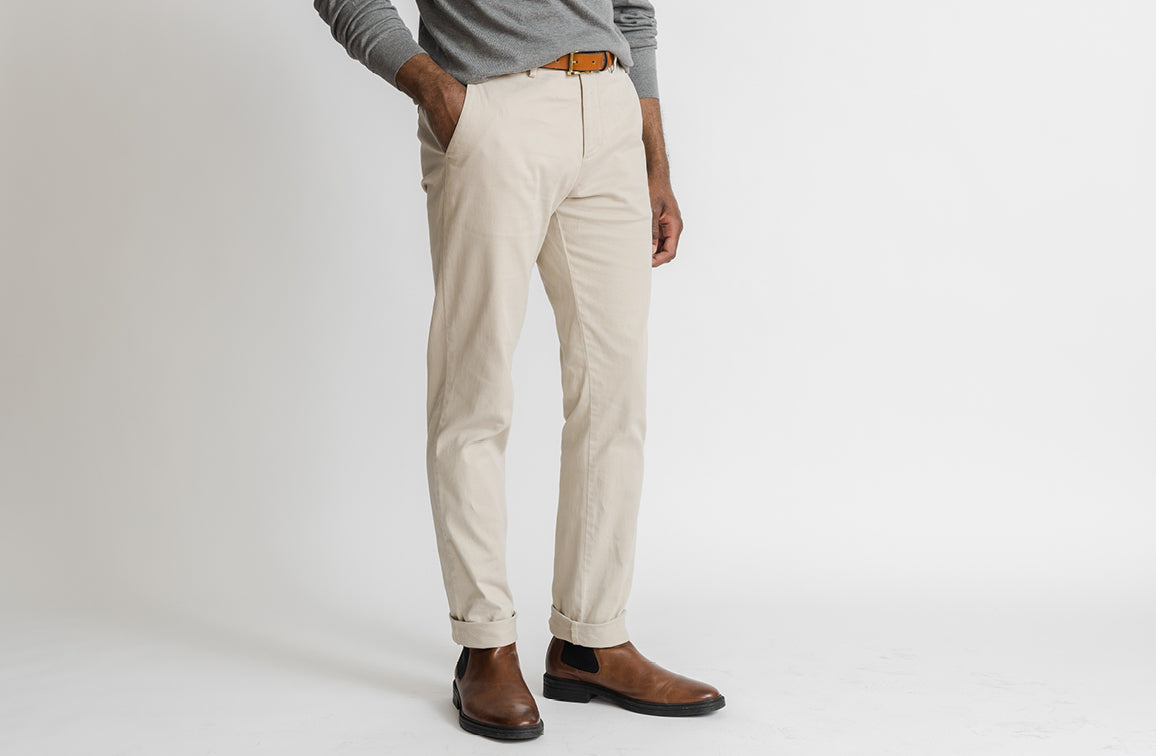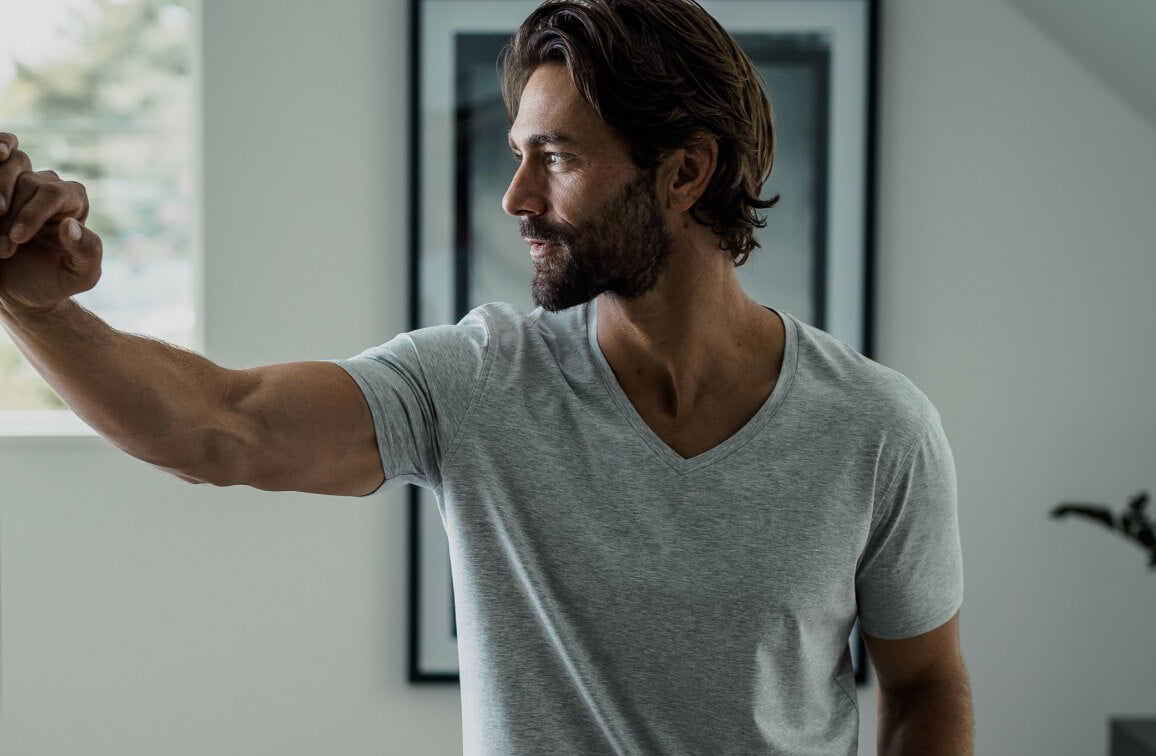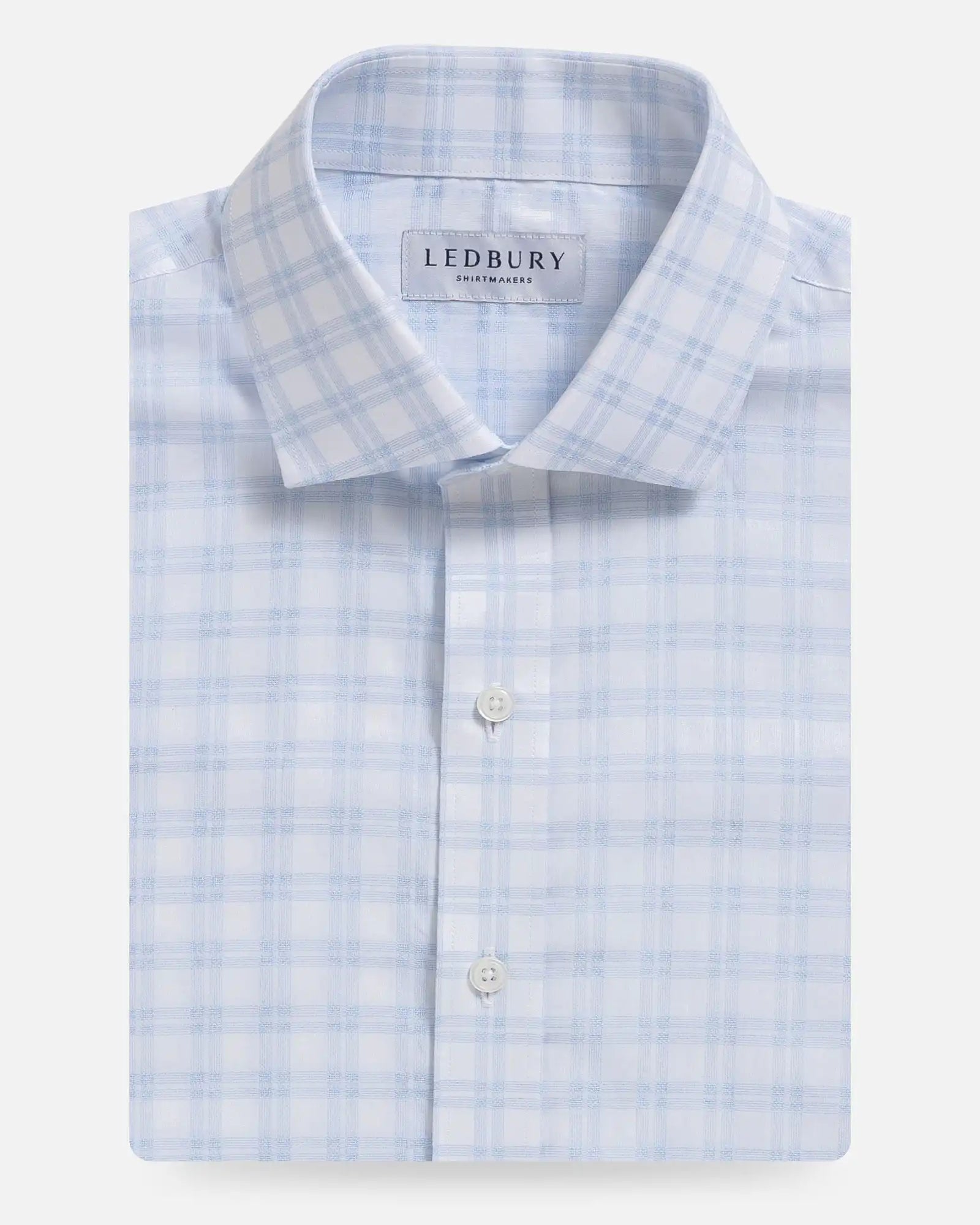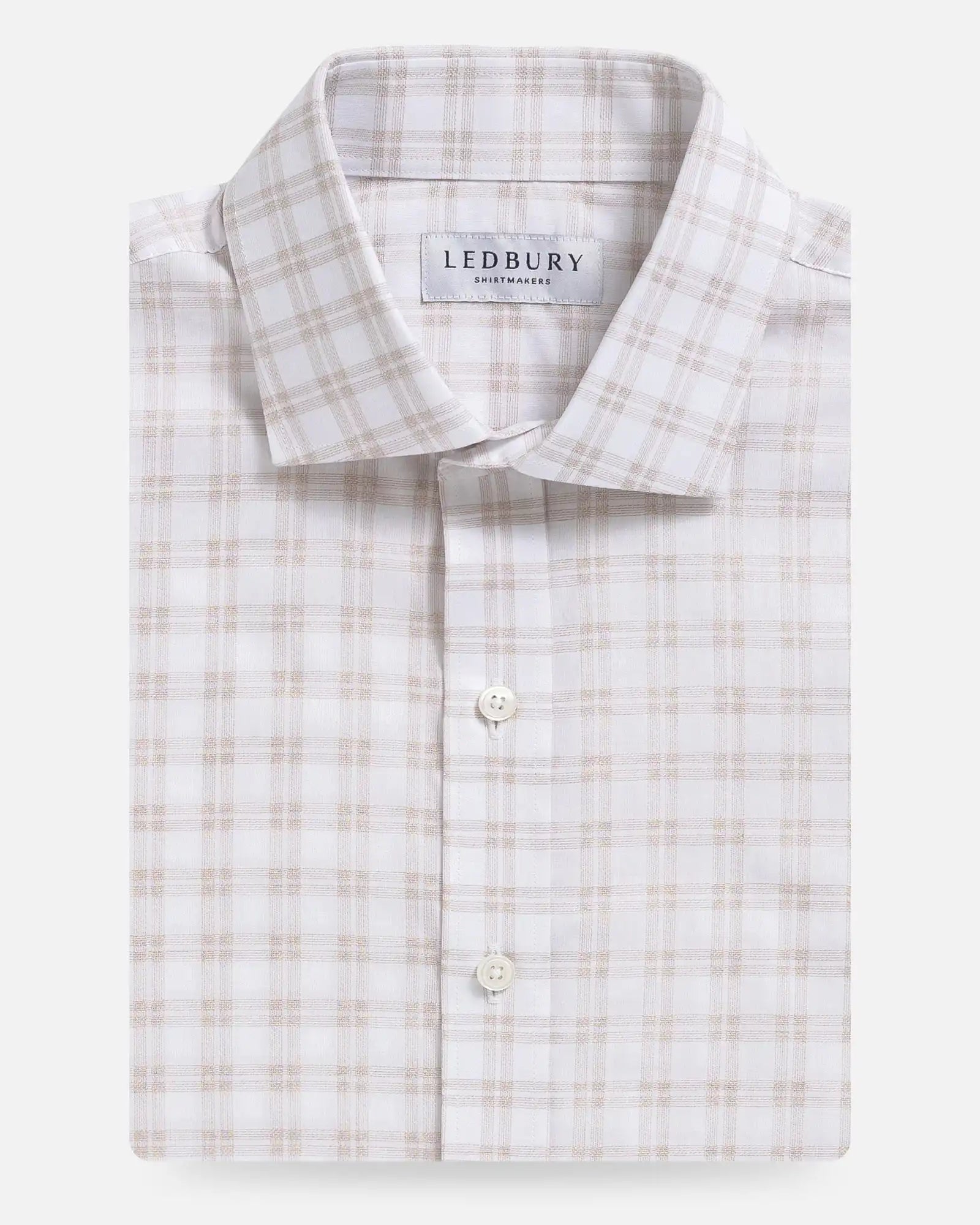






 Textile weaver Andrea Donnelly’s studio is only a short drive from the Ledbury office in the Manchester neighborhood of Richmond. This is a portion of the city best known for its converted tobacco warehouses and its industrial past. I met Andrea and her rescued pit bull, Huey, on an unusually cool late fall afternoon. The outside of the studio is unassuming and you can barely make out a sign that appears to read "Evan’s Specialty Co., Inc." – a lasting remnant from a former tenant who is long gone. But on the inside, Andrea is producing incredible one-of-a-kind hand-woven works of art.
Andrea came into weaving by coincidence during her beginning textiles course at North Carolina State’s school of design in 2004. After receiving her Master of Fine Art degree in fibers from Virginia Commonwealth University, Andrea launched Little Fool Textiles with her husband Jordan in 2010 as an extension of her work.
Watching Andrea at her jack-style loom is like watching an organ player who is deeply familiar with the ins and outs of their instrument. Both require the usage of all limbs and a precise awareness of their movements to operate. The execution of her craft is meticulous and time-consuming, but the results are impressive. Andrea took a break to sit down and tell me more about her background as an artist, her approach to weaving, and the future of Little Fool Textiles.
What initially attracted you to weaving?
It’s like drawing, but it’s in three dimensions. It’s like a line that you can touch, and I love watching these lines become fabric. It is a very tactile medium. It presents a lot of challenges because you are confined to specific parameters, but I’ve always enjoyed pushing these parameters while mixing in tradition, contemporary design, and my sensibilities of color and pattern.
So much is consumed and exchanged digitally that it’s a change of pace to visit a studio where something is being created by hand. It feels like weaving is an art form that we’re going to lose, but you’re helping to keep it alive.
My dad called me a couple of weeks ago because he read an article about how, as a world, we’re reaching the pinnacle of human performance. I’m sure this could be argued, but all the peaks have already happened: the greatest music, the greatest athletes, the greatest artists, etc. At the same time, we are also losing certain things, and woven textiles would be one of those things that would be going away. It’s funny because a lot of people see digital in the woven patterns that I produce, which is something I often reference in my artwork.
You have your career as an exhibiting fine artist, and you’re on the business side of things with Little Fool. Do you notice any overlap between these two things? Is one able to inform the other?
Absolutely, there’s 100% crossover. Refining technique in one arena will often lead to its use in another. For example, my color palette for my artwork has traditionally been very muted, but I think the color from Little Fool has started to filter into my artwork. In a lot of my artwork, there’s been the use of body imagery. I think I’m at a point where I’m moving away from that and more towards text and nature-inspired imagery – the patterns and systems that are prevalent in nature definitely come into the scarves, and now, my artwork. There’s definitely crossover and I consider the scarves artwork in their own right because they’re meant for wearing. That’s a fun and cool thing that I don’t get to explore in my artwork. You take this pattern and you get to see what happens when it’s bunched, transformed and put on someone’s body. It interacts with itself in a way that something hanging from a wall isn’t able to.
What’s your process for getting started on a new piece, whether it is a scarf or a new series of fine art?
It’s hard to say because everything has been stewing in my brain for so long. It’s difficult to go back and pinpoint the start of an idea. It kind of evolves and all of a sudden it’s there. I take a lot of walks and I’m always pulling things into my brain. As far as my artwork goes, it’s a journey from one piece to the next.
Lately I’ve been doing a lot of unweaving – a technique where I weave a piece of fabric, paint it, unweave it, and then weave it together again. That all started around the idea of the mirror image and the inkblot. The imperfection of that process and what does that mean if the mirror image is not? I’m a big reader and I’m really interested in the way we are transported through books into someone else’s mind, yet we are still in our own mind. So our vision of this is different from theirs but we’re both sharing the same thing – like two imperfect sides.
This is a new space for you, how’s it going so far?
I was recently able to quit my full time job as a barista, which I was working after grad school to support my studio. It’s wonderful but also terrifying because you have to take that leap at times. I’m still getting settled on a routine. I wake up with my husband and we have coffee together. He leaves for work around 8:30 and Huey and I walk over to the studio together. I like to be here and I like to work long hours. We’ll stay here until my husband gets here after work and we all walk home together. It’s a 50-minute walk between our home and the studio but we love walking and it’s a time to decompress and think.
This year is coming to an end. Is there something that you’re most proud of for 2014? What are you most looking forward to in the new year?
This has definitely been a breakthrough year for me, just being able to move full-time into the studio and be in this space. I’ve come a long way, and it took a long time to acquire all of this. It’s crazy and wonderful to think that this is where I’ve come to. This is the best yet and I’m proud of where I am as an artist.
I feel like I’m on this merging path between my fine art and Little Fool Textiles. My husband and I need to figure out how to tell the story of the artwork, the conceptual stuff, and the scarves in a simple way. There’s this inferiority complex that comes from making fine art with textiles because these materials are devalued because we interact with them on a daily basis. This is interesting because I’m using these same materials to make pieces that you do interact with – but the result is something that is handmade, valuable and expensive because it is a luxury. So it’s figuring out the point when something is displayed on a wall, and when something is worn on the body.
For next year, I’m looking forward to putting the studio to work. My husband has been thinking a lot about finding our audience and getting these goods in front of them. All of this is the kind of thing where you don’t know how to do
Textile weaver Andrea Donnelly’s studio is only a short drive from the Ledbury office in the Manchester neighborhood of Richmond. This is a portion of the city best known for its converted tobacco warehouses and its industrial past. I met Andrea and her rescued pit bull, Huey, on an unusually cool late fall afternoon. The outside of the studio is unassuming and you can barely make out a sign that appears to read "Evan’s Specialty Co., Inc." – a lasting remnant from a former tenant who is long gone. But on the inside, Andrea is producing incredible one-of-a-kind hand-woven works of art.
Andrea came into weaving by coincidence during her beginning textiles course at North Carolina State’s school of design in 2004. After receiving her Master of Fine Art degree in fibers from Virginia Commonwealth University, Andrea launched Little Fool Textiles with her husband Jordan in 2010 as an extension of her work.
Watching Andrea at her jack-style loom is like watching an organ player who is deeply familiar with the ins and outs of their instrument. Both require the usage of all limbs and a precise awareness of their movements to operate. The execution of her craft is meticulous and time-consuming, but the results are impressive. Andrea took a break to sit down and tell me more about her background as an artist, her approach to weaving, and the future of Little Fool Textiles.
What initially attracted you to weaving?
It’s like drawing, but it’s in three dimensions. It’s like a line that you can touch, and I love watching these lines become fabric. It is a very tactile medium. It presents a lot of challenges because you are confined to specific parameters, but I’ve always enjoyed pushing these parameters while mixing in tradition, contemporary design, and my sensibilities of color and pattern.
So much is consumed and exchanged digitally that it’s a change of pace to visit a studio where something is being created by hand. It feels like weaving is an art form that we’re going to lose, but you’re helping to keep it alive.
My dad called me a couple of weeks ago because he read an article about how, as a world, we’re reaching the pinnacle of human performance. I’m sure this could be argued, but all the peaks have already happened: the greatest music, the greatest athletes, the greatest artists, etc. At the same time, we are also losing certain things, and woven textiles would be one of those things that would be going away. It’s funny because a lot of people see digital in the woven patterns that I produce, which is something I often reference in my artwork.
You have your career as an exhibiting fine artist, and you’re on the business side of things with Little Fool. Do you notice any overlap between these two things? Is one able to inform the other?
Absolutely, there’s 100% crossover. Refining technique in one arena will often lead to its use in another. For example, my color palette for my artwork has traditionally been very muted, but I think the color from Little Fool has started to filter into my artwork. In a lot of my artwork, there’s been the use of body imagery. I think I’m at a point where I’m moving away from that and more towards text and nature-inspired imagery – the patterns and systems that are prevalent in nature definitely come into the scarves, and now, my artwork. There’s definitely crossover and I consider the scarves artwork in their own right because they’re meant for wearing. That’s a fun and cool thing that I don’t get to explore in my artwork. You take this pattern and you get to see what happens when it’s bunched, transformed and put on someone’s body. It interacts with itself in a way that something hanging from a wall isn’t able to.
What’s your process for getting started on a new piece, whether it is a scarf or a new series of fine art?
It’s hard to say because everything has been stewing in my brain for so long. It’s difficult to go back and pinpoint the start of an idea. It kind of evolves and all of a sudden it’s there. I take a lot of walks and I’m always pulling things into my brain. As far as my artwork goes, it’s a journey from one piece to the next.
Lately I’ve been doing a lot of unweaving – a technique where I weave a piece of fabric, paint it, unweave it, and then weave it together again. That all started around the idea of the mirror image and the inkblot. The imperfection of that process and what does that mean if the mirror image is not? I’m a big reader and I’m really interested in the way we are transported through books into someone else’s mind, yet we are still in our own mind. So our vision of this is different from theirs but we’re both sharing the same thing – like two imperfect sides.
This is a new space for you, how’s it going so far?
I was recently able to quit my full time job as a barista, which I was working after grad school to support my studio. It’s wonderful but also terrifying because you have to take that leap at times. I’m still getting settled on a routine. I wake up with my husband and we have coffee together. He leaves for work around 8:30 and Huey and I walk over to the studio together. I like to be here and I like to work long hours. We’ll stay here until my husband gets here after work and we all walk home together. It’s a 50-minute walk between our home and the studio but we love walking and it’s a time to decompress and think.
This year is coming to an end. Is there something that you’re most proud of for 2014? What are you most looking forward to in the new year?
This has definitely been a breakthrough year for me, just being able to move full-time into the studio and be in this space. I’ve come a long way, and it took a long time to acquire all of this. It’s crazy and wonderful to think that this is where I’ve come to. This is the best yet and I’m proud of where I am as an artist.
I feel like I’m on this merging path between my fine art and Little Fool Textiles. My husband and I need to figure out how to tell the story of the artwork, the conceptual stuff, and the scarves in a simple way. There’s this inferiority complex that comes from making fine art with textiles because these materials are devalued because we interact with them on a daily basis. This is interesting because I’m using these same materials to make pieces that you do interact with – but the result is something that is handmade, valuable and expensive because it is a luxury. So it’s figuring out the point when something is displayed on a wall, and when something is worn on the body.
For next year, I’m looking forward to putting the studio to work. My husband has been thinking a lot about finding our audience and getting these goods in front of them. All of this is the kind of thing where you don’t know how to do For more information on Little Fool Textiles, follow them on Facebook and Instagram.

